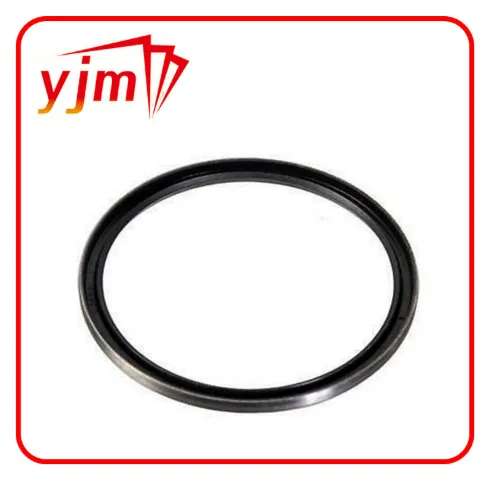Understanding Automotive Oil Seals: Protecting Engines from the Inside Out
In the world of vehicle maintenance and engine design, automobile oil seals play a crucial role in keeping systems running smoothly. Though often overlooked due to their small size, these seals are key components in preventing oil leaks, ensuring engine efficiency, and extending the life of your vehicle. Whether it’s a personal car or a high-performance vehicle, the integrity of oil seals can greatly affect performance and reliability.

What Are Automobile Oil Seals and Why Are They Important?
Auto oil seals—also known as car oil seals or engine oil seals—are mechanical devices designed to prevent oil or other lubricants from leaking between moving parts in an engine or drivetrain. They also serve to keep dirt, debris, and moisture from contaminating internal components.
These seals are typically made of rubber, silicone, or PTFE (Teflon), often reinforced with metal or fabric to maintain shape under pressure. Their applications include sealing the crankshaft, camshaft, differential, transmission, and wheel hubs.
The primary functions of automobile oil seals include:
Retaining lubricants within the system
Blocking external contaminants
Reducing friction between moving components
Maintaining internal pressure where needed
In high-speed or high-temperature conditions, failure of an auto oil seal can result in serious engine damage, overheating, or loss of lubrication.
Common Types of Automotive Oil Seals and Their Functions
There are several types of oil seals used in modern vehicles, each designed for a specific function. Understanding these can help with proper maintenance and troubleshooting.
- Car Engine Oil Seals
The car engine oil seal is used around crankshafts and camshafts, typically where the shafts exit the engine block. These seals must handle both high rotational speeds and exposure to motor oil.
Failure of a car engine oil seal often results in visible oil leaks near the engine front or rear, a burning smell from leaking oil on hot components, or low oil levels on the dipstick. Replacing them in a timely manner is vital to protect your engine.
- Automotive Shaft Seals
Automotive shaft seals are broader in scope, sealing any rotating shaft in a vehicle, such as in the transmission, steering, or axle. These seals must manage both rotation and axial movement while retaining fluid.
They are designed to:
Handle high-pressure differentials
Minimize drag on rotating shafts
Operate in dirty or corrosive environments
Modern automotive shaft seals often include dust lips and spring-loaded inner rings to improve sealing performance and reliability under load.
- Transmission and Differential Oil Seals
These auto oil seals work to contain transmission fluid and gear oil, ensuring that drivetrains run without friction damage. Often located at the output shafts and yokes, these seals help avoid lubrication loss and mechanical wear.
In many high-performance or commercial vehicles, advanced materials such as fluorocarbon rubber (Viton) are used to improve resistance to heat and transmission fluid chemicals.
Signs of Oil Seal Failure and Maintenance Tips
Keeping your car oil seal system healthy requires vigilance and proper maintenance. While these seals are built to last tens of thousands of miles, wear and tear can take their toll.
Common Signs of Oil Seal Problems:
Visible oil spots under the vehicle
Unusual burning smells or smoke from the engine bay
Excessive oil consumption
Whining or grinding noises from drivetrain components
Degraded engine performance
If an engine oil seal fails, oil can leak out, reducing lubrication and increasing friction within the engine. Over time, this may cause engine overheating or even seizure in extreme cases.
Maintenance Tips:
Regularly check oil levels and inspect around the crankshaft, timing cover, and transmission for leaks.
Use quality motor oil and avoid overfilling, which can stress seals.
When replacing timing belts or chains, always inspect and consider replacing nearby car engine oil seals.
During oil changes, have your mechanic check seals for signs of cracking, hardening, or swelling.
In some cases, minor leaks can be temporarily managed with oil seal conditioners, which help restore rubber flexibility. However, these are not permanent solutions.
Whether you're driving a compact car or a heavy-duty truck, automobile oil seals are critical to engine and drivetrain health. High-quality auto oil seals, automotive shaft seals, car engine oil seals, and other engine oil seals are designed to work under intense conditions, but they still require inspection and care.
By understanding the different types of seals and the warning signs of failure, vehicle owners and technicians can take proactive steps to maintain performance, reduce repair costs, and ensure a longer engine life.
-
Seal 12x20x5: Precision Radial Shaft Seals for Industrial Reliability
Știri Nov.24,2025
-
Seal 12x18x5: Essential Guide to Specifications, Applications & Vendors
Știri Nov.24,2025
-
Understanding Seal 12 20 5: Applications, Specifications & Industry Insights
Știri Nov.23,2025
-
Durable Oil Seal 85x110x12 – Reliable Sealing Solutions for Industry
Știri Nov.23,2025
-
Durable and Precise Oil Seal 75x95x10 for Efficient Machinery | YJM Seal
Știri Nov.22,2025
-
Durable Oil Seal 75x100x10 for Reliable Industrial Performance | YJM Seal
Știri Nov.22,2025
-
High-Quality Oil Seal 65x90x10 | Durable & Reliable Sealing Solutions
Știri Nov.22,2025
Categorii de produse















